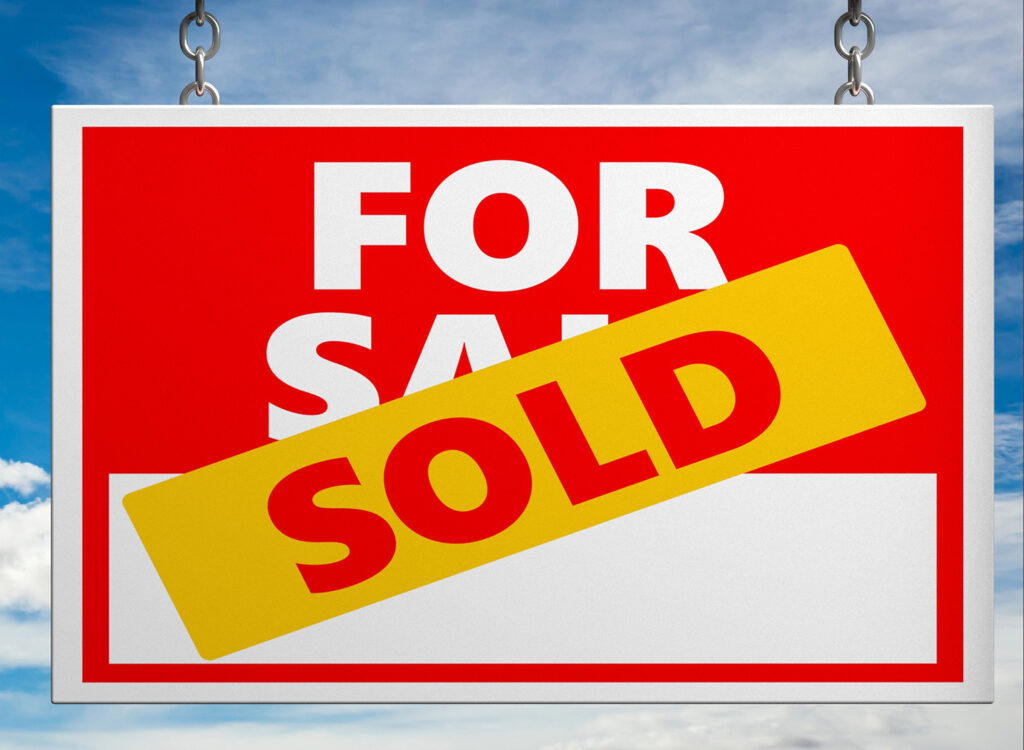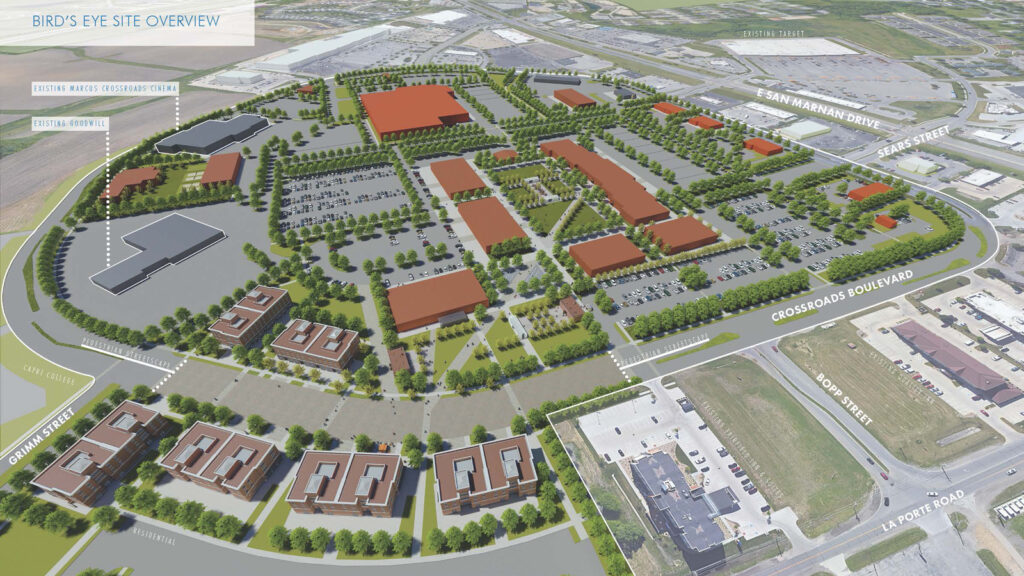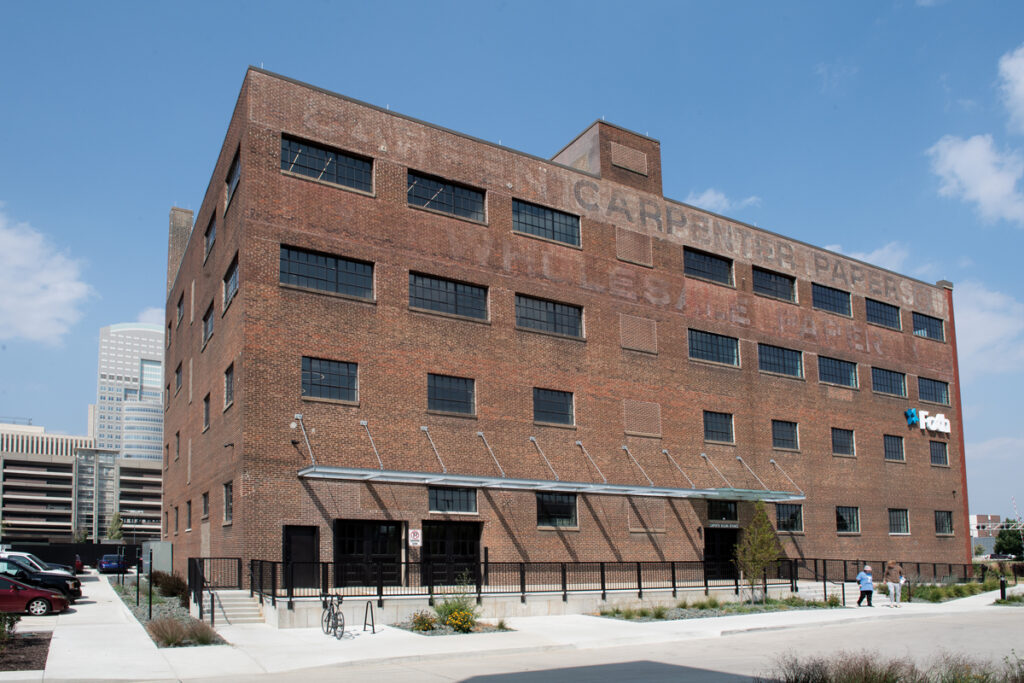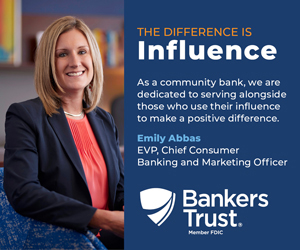Retail Roundtable Q&A – 2019 Annual Real Estate Magazine
Corridors, corners, frontiers

KENT DARR Apr 17, 2019 | 7:19 pm
22 min read time
5,282 wordsBusiness Record Insider, Real Estate and DevelopmentOne thing can be said about the retail world: There’s never been a dull moment over the last several years as it casts about on something of a vision quest and spins a range of nifty buzzwords during that search. Little question it generates some heartburn along the way.
A hot corner, a busy corridor, a new frontier — they’re all waiting for storefront retailers who can find them. Chances are the bigger players in the field have the data to help them zero in on the right locations, and if they follow their online leads to a brick and mortar shop, so much the better.
Our retail panel met at a time when big department stores were cratering, leaving the local malls that hosted them searching for better days. We couldn’t let an hour of conversation slip by without talking about Merle Hay Mall and Valley West Mall (soon to be Valley West Commons).
But there’s more to the landscape. For example, where is the next retail frontier in Greater Des Moines? Where are retailers feeling the most pain and, really now, just how acute is it? A great question came from panelist Laura Rowley, a retail specialist, consultant and author who has advised the Greater Des Moines Partnership on downtown retail.
What is the Greater Des Moines “vibe,” she asked, and is there a way, possibly through social media, to communicate the retail message?
Our panel would have agreed with this comment from Richard Hurd, who has proved plenty adept at negotiating the bumpy terrain of retail in a dozen markets across the country, on the general theme hovering over retail this year.
“The underlying theme is the strong retailers are doing quite well and they will continue to do well. They’re opening new stores at a pretty rapid pace,” Hurd said.
Others on the panel were Tim Leach of the Greater Des Moines Partnership and brokers Aaron Hyde of JLL and Collin Nelson of Cushman & Wakefield Iowa Commercial Advisors.
Watch the roundtable video in its entirety here. Watch the other four videos at businessrecord.com/arem.
The changing mall scene
How important is the survival of a retail center like Merle Hay Mall? How significant is it to pump additional public monies into helping that mall deal with the fickle nature of retail?
Richard Hurd: Since [Hurd Real Estate Services has] the listing on the Sears building out there, I’ll take a shot at it. I think it’s not a one size fits all answer to that question. It depends on where your mall is located and the surrounding neighborhood. If we were talking about Merle Hay in particular, the answer is one thing. If you’re talking about Valley West, the answer would be something else because the conflict between the two is that Valley West is in a location that allows it to be developed into other types of uses that would probably not be successful at Merle Hay. Merle Hay also, keep in mind, is the only … I mean, it’s in Des Moines, primarily. There’s a little piece in Urbandale, but it’s primarily a Des Moines mall. South Ridge is pretty much de-malled already, so it’s really the only mall left in Des Moines proper.
I think it’s important for that area of the city to see it survive. It won’t survive in the same fashion and configuration and services that it’s been since 1959 because department stores are on the decline. It’s really not going to be a four department store mall. It may be a one or two department store. Sears could very easily become a medical use. It could become some other type of ancillary use that brings in traffic and provides services to the neighborhood but not necessarily a pure retail play.
If your question is really more specifically about Merle Hay, I think it’s pretty important for that area of town, but it’s going to provide different services than what we have traditionally seen out there going forward.
Tim Leach: I think Richard’s exactly right. I think it’s important to that neighborhood, and I think that is such a large, key piece of real estate. It’s important to the [Des Moines] neighborhood. It’s important to Urbandale. It’s right there. I think you have to keep those neighborhoods connected. You can’t make that Merle Hay area an island, if you will. You’ve got to figure out how to connect it back to downtown. Again, some of the successes we’ve had in downtown, you keep it connected in a neighborhood so it doesn’t fall into disinvestment and more disinvestment. Sooner or later, you’ve really got problems on your hands. I do think it’s going to look a lot different than it did in ‘59 and through its heyday.
Collin Nelson: The surrounding neighborhood is a bit in transition where you’ve got a lot of homeowners that have been in those homes for a long time and they’re starting to sell those homes off to first-time buyers. The demographics of the neighborhood, I think, are changing a bit. It’s in transition and those first-time homebuyers coming in are looking for services and amenities. A Flix Brewhouse would be great for that neighborhood. I think those guys are on it. What they’ve done so far is great, but it’s just continuing that transition.
What would fit in a vacant Younkers at Valley West Mall that wouldn’t fit in a vacant Younkers at Merle Hay?
Hurd: Well, office. You have to realize that Valley West has a lot of attributes that Merle Hay doesn’t have. Merle Hay has a lot of attributes that Valley West doesn’t have. They’re just totally different puzzles. If you own one or the other, your approach would be totally different as to where to go in 2019. First of all, Des Moines had four malls. We’re probably a one and a half to two mall city in terms of population in today’s world. What does that mean? There’s only two chairs and there’s four malls. South Ridge is already pretty much converted to a strip center, so that one’s off the table. The problem Valley West has is it’s just, frankly, physically too close to Jordan Creek.
Jordan Creek is the premier mall. It will be the premier mall. It will do just fine because we need a good, solid mall. There is virtually no vacancy in the corridor. It’s where every retailer wants to be that comes to town. If you look at it from that perspective, Merle Hay has a benefit because it is physically further away from Jordan Creek than Valley West. The other thing that Merle Hay has going for it is that one of the other big growth areas of the metro is Ankeny. Merle Hay is north and closer to Ankeny, and there is an awful lot of population growth in Ankeny that needs to be served.
The good news for Valley West is it’s right on Interstate 235. It’s great real estate. You’re at the beginning of the office corridor. Younkers could be fairly easily converted into office. It’s got a big parking field. It’s got great access. The rest of it, I mean, there’s all kinds of things that can be done from all kinds of experiential retail, to service retail to residential. There will probably be some residential on that site before it’s over.
Leach: Valley West is going to look a little different. It’s going to have to evolve with the neighborhood around it. Basically, that area is pretty vibrant. There’s a lot of traffic out there. There’s a lot of cars in that lot. Von Maur brings a lot of traffic. Is it going to go through some growing pains when losing the big boxes? Probably. Are they going to look the same? Are there going to be different services? Is there health care? Are there fitness or new things on the horizon, new services that people are looking for? I think all malls in that particular category, not to equate them exactly on a real estate basis, but I think they have to evolve with the changing times.
‘The frictionless city’
(via Laura Rowley) I had a question for the panel. Travel and Leisure surveys thousands of people every year and asks them for the list of America’s favorite places. Des Moines has a lot of the characteristics that were reflected in this survey that people love — friendly residents, a relaxing ambience, historic preservation, walkability. How would you define Des Moines’ vibe? If you had to pick three adjectives that described Des Moines’ vibe for you, what would they be?
Aaron Hyde: To me, it’s just a chill, laid-back, Midwestern vibe. I don’t know if that hits where you’re going. Just like a lot of places, different pockets or different neighborhoods have this, even downtown looking at the Western Gateway, the core and the East Village, they all have their own little feel to it. It’s cool, but Des Moines, too, has done a great job of marrying all those together.
Nelson: Yeah, I’d agree with that. I think certain pockets of Des Moines or different neighborhoods have a different feel to them. If you look at East Village and downtown versus Ingersoll, those are similar but two distinct vibes. Then you look at a West Des Moines, which has a different vibe, but I think downtown and specifically the East Village is very nice to look at. A lot of local businesses like Raygun that are locally grown or some of those that are satirical and funny. Getting to your point, there’s different pockets, but I think it all flows together nicely and there’s a little bit of something for everybody.
Leach: A few of us can go back when the Partnership first started and one of our first campaigns was to change your view, change your own attitude. We have that Midwest, humble attitude, look down at your shoes when people are giving you compliments kind of thing. It’s surprising. We really hit above our weight class. Our rankings are very proven. We constantly fight a battle of “do we say enough about ourselves?”
I think one of our taglines over the years was “the surprising place.” It surprises people sometimes how well Des Moines does.
Would wholesome fit? That’s kind of what you’re saying, Tim. Raygun seems to be beyond the box, but they’re incredibly successful and wildly popular; seems very un-Des Moinesian to someone who grew up around here.
Leach: I would agree. I think they had just enough to be really popular. They can make fun of us a little bit and we all enjoy it, but I think wholesome is a good word. It’s Midwest. It’s who we are. I think we should be proud of a lot of that.
Hyde: You used the word Des Moinesian. I think we’re a lot less Des Moinesian than people think. We have these cool things. We have these Rayguns. We have this great food. There’s a lot more going on here. Every time I bring somebody to town to tour, they’re really blown away, every single time. I think a lot of people who live here don’t realize how nice it is and how good we have it. I go to these other markets and these other property tours. It’s not as nice. Our downtown for a small market is just great. It’s married together. It’s easy to get around. There’s a lot of cities that are our size or just a tad bigger. They just don’t have it together.
Rowley: That’s interesting. I mean, as somebody who lived on the East Coast for 20 years, I’d say yeah, people definitely don’t know how good they have it here. I think of Des Moines as friendly, affordable, livable. My husband and I call it the frictionless city. It’s easy. You can get anywhere. I think about it as a place where there’s primaries and the fabulous farmers markets and the State Fair. I’m just wondering how that’s reflected in the retail vibe. I just wonder if Des Moines in the future in some of these neighborhoods could have a cohesive theme to it. Maybe that’s something that arises out of things like geography and culture, and so you have a town that has all Victorian will have those kinds of shops or a town that has all Colonial will have, will reflect that, because that’s the kind of people they’re drawing in. I’m just wondering if you could bolster retail by communicating its vibe in a certain way.
I’m wondering if there’s a central social hub around the retail part of Des Moines? Where do you get your information about what’s happening in retail?
Nelson: I don’t know that there is one hub. I’d say if you’re browsing a lot of content, you see it on Facebook. You see it on Twitter and Instagram. … It happened just the other day, speaking of social media and people advertising, how those two can work together. I was on Instagram and I saw a picture. I touched the picture of this gentleman and a button popped up for every piece of clothing he was wearing. I clicked on the button for his watch, and it took me to Casio’s website. I looked at the watch, wasn’t sure, it was a little bulkier than I’m used to. At the bottom, there’s a box that says, “Find a store near you.” I put my ZIP code in, and there’s three stores around Des Moines that had it. I went to the store, tried it on, and I liked it and I bought it. That was a really seamless process. That’s really crazy if I think about how online and in-store can work together and a lot of, especially these places that people are able to leverage that.
Hyde: To get back to what you were saying, I don’t know that there is one way or one channel. I think maybe it depends on what the product is and what you’re buying. The first thing that comes to my mind is furniture. There’s a lot of folks here in town who will make custom pieces for you. It’s all over Instagram, or if you just say, “Oh, I like this,” you can find them on Instagram and they’ll make it for you. When it comes to bands or stuff like that, it seems like it’s usually Facebook notifications that I get. It’s coming at you from every angle.
Leach: I’m not so sure that in retail it would be one central social media. Gen Z is about 11 percent Facebook while boomers are about 25 percent. The millennials, you hear that they do most of theirs on Instagram or Snapchat, so it depends on what audience you’re after for what channel you would be using. Those are the numbers. If your target is a boomer probably, then you’ll probably use Facebook. If it’s the millennial crowd, it’s probably Snapchat or Instagram.
Richard, to refer to Laura’s question about our “vibe,” is there a type of retail that you would not pursue for one of your centers?
Hurd: There are plenty of them that are out there that we wouldn’t pursue for various reasons. Let’s back up a step here. What type of culture do we have? The retail has to reflect the culture. It isn’t the other way around. The stores reflect the culture of the city. What we try to do is we try to bring retailers that enhance the experience of living here based upon the culture of the city. [Hurd Realty is] in 12 states. What we have here may not be what we have in Las Vegas, for example, or in Phoenix.
The point is that you have to be cognizant of what actually is interesting, as Laura pointed out. Take Nashville, for example. What’s the first thing that comes to mind? Music, so you would have a retail environment that would be highly sensitive to the music industry, especially country music. If you were there, you might have Gibson guitars and you might have clothing that reflects that lifestyle. We probably wouldn’t be successful with that here just because we don’t have the demand for it. That’s an example of geography playing a role in how you select the retailers that you would work with and how they would select our market, also.
Nelson: I’ll touch on that as well. I think you need to really look at each company in specific. I think an example I would go to is a department store. A lot of people would say, “I wouldn’t touch a department store right now.” Here in Des Moines, maybe I wouldn’t take a Sears or J.C. Penney, but I would take a Von Maur. I think we have to look at each company individually and how they fit into your neighborhood and your market and really take a look at them and try to stay away from industry generalizations.
The next retail frontier
Are there any sleeper retail areas left? Has Johnston experienced its full potential for retail? Pleasant Hill, Norwalk?
Nelson: In Johnston we’ve got this thing at 54th and 86th Street. We’ve seen some really good activity from restaurant users. I really like that neighborhood because it’s an established neighborhood. It’s got a lot of rooftops. We’ve got some good, solid employers with DuPont and Pioneer. You’ve got growing daytime population with the addition of John Deere going there and now the addition of Pella. It’s the quarter that I think the perception there is that it’s been underserved by restaurants and coffee users and things of that nature. That’s one that I think we’re excited about right now.
Hurd: You’re talking about corridors and nodes, I think. Collin’s talking about a corner. Those are different things. There’s no doubt that Waukee is the next retail frontier. It just is. It’s where everything is moving. It will have all those services in time. Johnston, with all due respect, I don’t believe will ever get that. Again, Johnston has the problem that it’s in between Des Moines and Ankeny, and Ankeny is the next retail corridor. You’ve got Jordan Creek. You’ve got Merle Hay. You’ve got Ankeny and you’ve got Waukee and then the regional stuff out in Altoona. Those are really the nodes that have the strength for retail.
Hyde: I’d like to piggyback on that. The Johnstons of the world, I think they’ll do fine at the strip retail. You’re not going to get the big box retail. It’s just a tweener site. These guys, they’re getting more selective. They have to be selective. They can only do so many stores, especially e-commerce and whatnot. When you’re that close to Merle Hay, I don’t see how you can do it. Up in Grimes you do have, I think, you’ll see your grocer going in. You’ve got your Menard’s and your Walmart and maybe a few other small friends, I’ll call it, but I don’t foresee a TJ Maxx necessarily going up there, and if it is, it’s a long way in the future because it’s just too close to everything else.
Leach: When we had our focus groups it was pretty clear. We have really good neighborhoods and it was Jake Christensen pointed out we have a tendency to build lily pads and we’re not connecting those. I think we need to concentrate on making sure we connect these neighborhoods. Some of that will happen naturally. You think about the underpass, going under the underpass at Fleur Drive and what’s going on in Gray’s Station and the Hubbell development. We’ll start to connect that south area to downtown. We have to have an ounce or a pound of patience with Walnut Street as we take a look at especially that east building comes up. I’m talking about connections to make sure our neighborhoods are not isolated.
Then the other thing that came out as a strong imperative was that not every neighborhood from a retail perspective can be an East Village nor should be. I think the west end, for example, where the West End Salvage is, and we got the jazz club and we’ve got some other unique shops. It starts to take on an identity of its own.
In the area where the arena is and the hotel, there’s some good real estate that’s in pretty savvy development hands. I think you might see some more entertainment-type retail, entertainment being more sports-themed or entertainment-type things. Again, it seems like it’s not fully connected, so some of those things will happen naturally and we’ve had some discussions with the city saying, “Where do we need to make connections?” Maybe that’s where we target some of those incentive dollars to help the developers develop those areas.
In closing: Delivery services, entertainment and restaurants, brown packages aren’t green, the middle ground …
Leach: I think we covered an awful lot of ground. I think in 2019 you’re going to see more of the same [with] some changes coming, restaurants with delivery, for example. It’s interesting to note that McDonald’s started with 200 test sites. Now they’ve got 5,000 where they actually deliver. They’ve got Uber Eats and some of those that have cropped up. I think the subscription services have had huge growth online. You’ll just see more and more as they figure out what it is people want.
I think some of these malls, or at least the high-quality malls, have an opportunity for some of that comeback. Some stores that we thought were down and out are making comebacks and have a possibility to fill some vacant spaces.
Nelson: One thing I think I’m interested to watch, I think we’ve touched on it lightly in a couple of different ways, is Amazon. Obviously that’s on everybody’s mind as an online retailer, but with their acquisition of Whole Foods, they’ve entered the physical retail market. Now with their Amazon Go stores, I think they’re up to a couple now in Seattle and Chicago, but there was a Bloomberg report the other day that said they might be up to 2,000 stores by 2021. If they are to hit that growth, that’s pretty impressive. How does that hit the real estate market, and when do they come to Central Iowa? With all these retailers that are doing great and all this real estate up for grabs, who takes it? How does this fill in, and how does each unique asset and neighborhood reposition these assets, and what does that look like going forward?
Hyde: I think we’re going to see a lot more entertainment-type users in the marketplace and really try to take advantage of these big boxes that have gone out. I think we’ll also see retailers offer more exclusive offers to try and draw you in for the experience. I think we’ll see more of that. We’re still going to see the restaurants grow, and we got a lot of cool ones coming.
Hurd: I know it’s not in the interest of a lot of the companies that are connected, but online shopping is terribly environmentally insensitive, and we hear nothing about it. Putting it on an airplane and flying it from LA to Memphis and from Memphis to Des Moines, and then you put it on a brown truck that’s diesel-powered with one guy driving one package to everybody’s house is not an environmentally wise way to deliver goods to people. Stores are much more efficient.
We’re all here. We all went to work today. We all got in a car and drove to work. It’s much more efficient to stop and pick up what you need on your way to and from work than it is to go through that process I just talked about, not to mention all the packaging it takes to package it. There is obviously a glut of packaging now in our country from all the cardboard. Then every time, as Tim or someone pointed out, every time you order something it’s not the right size and you repeat the process all over again.
Rowley: I’m very bullish on Des Moines, and I’m bullish on Des Moines retail. Part of it, I’m in the middle of writing a book with the tentative title “Live in a Flyover City and Get out of the Coast and Get a Life” because that’s what my husband and I did. Five years ago we were living 60 miles outside of Manhattan, but our commute was an hour and a half each way. When I looked at Des Moines, it was such a 180 in lifestyle and I thought, “Is it only me?” I started to do some research, and there are all of these enormous economic, structural, social and cultural factors that are hitting millennials, everything from housing prices and property taxes to student loan debt to lower wages. At the same time you have these cities in the middle like Des Moines and Columbus, Ohio, and Omaha and Kansas City that are rising culturally and offering all the good bones that millennials that are starting to have children want, things like awesome schools and easy commutes and parks and recreation that’s accessible.
Retail Takeaways
Painkillers
If retailers are feeling any pain, it’s more than likely a result of the area’s low unemployment rate. There aren’t enough workers to go around.
“I’ve got a lot of guys that are trying to open up shops and they’re having a heck of a time trying to find people that they can rely on to work in the stores,” said JLL’s Aaron Hyde.
Lack of workers is a big issue among restaurateurs, he said.
Smaller retailers also can be hampered by too little information about their markets. The Partnership is looking for ways to provide that data.
And there is the equally important task of making sure small businesses operate in a clean and welcoming environment, Tim Leach of the Greater Des Moines Partnership said.
“There might be some movement afoot in the Market District for some public spaces, some parks, perhaps some pocket parks that serve a playground for the kids,” Leach said.
Convincing residents that downtown is a good place to raise a family is important, too.
“As our neighborhoods mature, we want to keep these people downtown as they start families,” Leach said. “Attracting more schools is a big part of it. Where are our kids going to go to school? That makes that neighborhood development programming even more important. … I think schools are a big part of our culture here.”
A theme: A resurgence of storefront retail
The folks who study the studies and read the data are upbeat about the future of brick and mortar retail in a variety of forms.
“Physical retail is really making a resurgence in a lot of areas and probably doesn’t get as much press as it should,” Richard Hurd of Hurd Real Estate Services said. “We still have the weak retailers that are still closing stores, but the other side of it is that there’s more stores opening. There will be more openings in 2019 than there are closures.”
“Clicks to bricks” filled several snippets of conversation. It is used to describe online retailers that take to the streets.
“I think it’s more of an evolution than the retail apocalypse that everyone has talked about, especially if you look at digital native retailers,” retail author and consultant Laura Rowley said. “They have the data that tells them where to open the stores. There was a retail study that found digitally native brands are going to open 850 stores this year. It’s a burgeoning area of the market.”
The digital retailers are “able to keep track of their online sales and they’re really able to dig in and make some important decisions on what markets they should be in, where they should be in those markets,” said Collin Nelson of Cushman & Wakefield Iowa Commercial Advisors.
Citing a study by the International Council of Shopping Centers, Aaron Hyde of JLL noted that online retailers reported a 37 percent spike in internet traffic after they opened a brick and mortar store.
“High-quality real estate’s going to be very, very competitive,” the Greater Des Moines Partnership’s Tim Leach said. “That said, B and C space still may have some struggles. Some of those midtier, lower tier malls seem to continue to struggle, but high-quality real estate is going to be very competitive.
Building on the Target strategy
We asked Laura Rowley to provide some insight on how big-box retail has managed to succeed where others of its ilk have failed. The author of “On Target: How the World’s Hottest Retailer Hit a Bull’s-Eye,” she is the person to ask.
Here’s the answer:
“Target had a couple of things going on. From the very beginning, the founders had a clear vision that it was going to be the upscale discounter. In 1962, the Dayton brothers said, ‘This is not going to be a straightforward competitor to Kmart or Walmart. We will be the upscale discounter. We’re not going to discount because we’re selling cheap goods at cheap prices. We’re going to sell high-quality goods at a value.’ They had come out of the Dayton department store tradition and sort of continued that quality aspect.
“The other thing they’ve been really good at is creating their own brand by cherry-picking the other brands. It started with Michael Graves, the architect. He started doing fancy housewares for them. Then one by one by one they started having all of these individual designers coming in and doing a line specifically for Target. They were one of the first retailers to really get the notion that you make something affordable and surprising and you change your collections over time with something that’s exclusive to the store.
“The other thing that they were really smart about is they did not make themselves into a mini mall. It was always Target brings me Michael Graves, where if you looked at Kmart, I think it was Martha Stewart is at Kmart. They were almost subordinating their brand to the larger name, and Target doesn’t do that. They made their brand front and center.
“You see retailers downtown like Raygun that are jumping on this trend of fast retail mixed with media. It’s really interesting to me that a lot of media companies are doing retail. Companies like Ziff Davis, PC Magazine, they’re making most of their money now on affiliate marketing. They’ll review a tech product and then you’ll click through and you’ll buy that tech product and they’ll get a commission. Media is doing retail, but then you see retail doing media. Raygun did a whole, I mean they turned around a whole T-shirt line around the Elizabeth Warren comment, “Nevertheless, she persisted.” By 9 a.m. that morning they had shirts in the store with that slogan on it, same day, and did tens of thousands of dollars of retail on that media theme.
“I think speed is involved. I think media is involved. I think that having a really clear, authentic voice. Target had those things, and you see successful retailers today building on that.”










